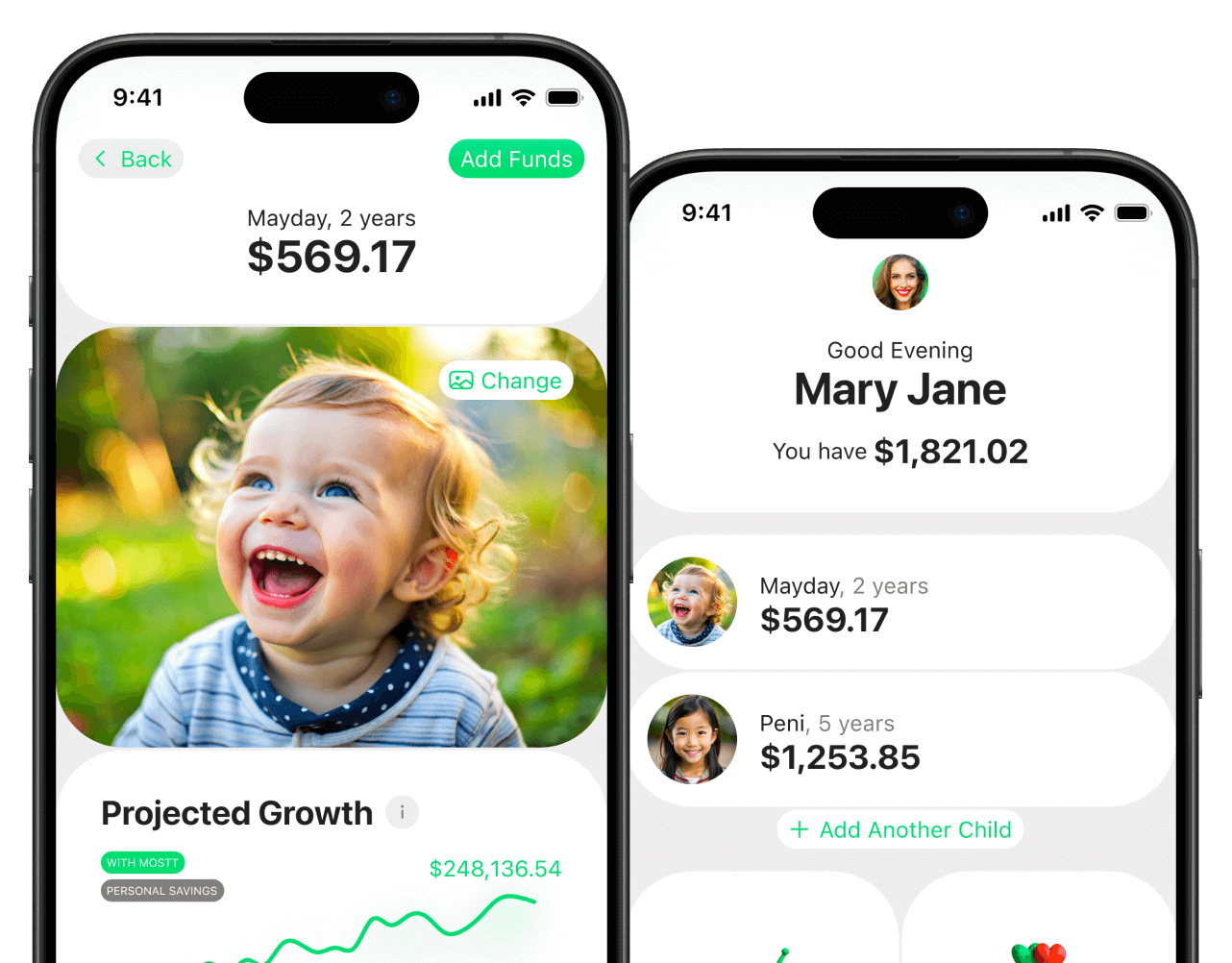Every family has dreams.
Maybe for you, it’s buying a home with a yard where your kids can play. Maybe it’s paying off those lingering student loans. Or maybe it’s something as simple as finally taking that beach trip you’ve talked about for years.
But here’s the problem: most dreams never make it past dinner-table conversation. We say we’re going to save, but we don’t actually track progress in a way that keeps the goal alive. Then life gets busy—soccer practice, dentist appointments, grocery runs—and those dreams fade quietly into the background.
The truth is, if you can’t see your goals, they won’t stay top of mind. And if they’re not top of mind, they don’t get done.
That’s why visual goal tracking is such a game changer. It turns invisible dreams into visible progress. And when the whole family can see that progress? That’s when momentum kicks in.
Why Visual Goals Work
Our brains are wired to respond to stories and images—not spreadsheets. That’s why Olympic athletes don’t just train; they visualize crossing the finish line. Seeing something makes it real.
When it comes to money, numbers alone aren’t motivating. Telling your kids, “We’ve saved $1,200” doesn’t mean much to them. But if they see a giant chart with a thermometer rising each week, they suddenly care. They can see the finish line getting closer.
This isn’t just for kids, either. Parents are motivated by visuals too. Think about it: would you rather look at a bland bank statement, or a bold chart on your fridge showing that you’re 60% done paying off a car loan?
Visuals remind us that progress is happening—even when the journey feels slow. They turn sacrifice into celebration.
👉 According to Investopedia, setting clear, trackable financial goals is one of the most important steps toward building long-term wealth.
A Family Story You’ll Recognize
Let me paint a picture.
Imagine a dad named James. He wants to take his kids to the beach next summer. He sits them down and says, “We’ll need $1,500, so we’re cutting back on takeout and saving $100 a month.”
The kids nod politely, then immediately ask what’s for dessert. Nothing changes.
Now imagine a different approach. James prints a big poster of a beach scene—sand, ocean, palm trees—divided into 15 sections. Every time the family saves $100, they color in another section.
Within a few months, the kids are running to the fridge after each deposit. “Do we get to color in the next piece yet?” they ask. They start suggesting ways to save money—“Can we make pizza at home instead of ordering out? That way we’ll get to the beach faster!”
The difference? The goal became visible. And when it was visible, it became a family mission instead of Dad’s boring financial lecture.
How to Create Visual Financial Goals for All Ages
Ready to try this in your own home? Here’s how you can bring visual goal tracking to life—whether your kids are toddlers, teens, or somewhere in between.
1. For Young Kids (Ages 4–8): Keep It Fun and Tangible
At this age, money feels abstract. They don’t grasp the concept of “$500,” but they do understand stickers, jars, and coloring pages.
Ideas:
-
Sticker Charts: Every $5 or $10 saved = one sticker. Kids get a rush of excitement from adding the next star or smiley face.
-
Savings Jars: Label clear jars “Save,” “Spend,” and “Give.” When kids drop coins or bills into the jars, they can literally see their money growing. (This aligns with the classic three-jar method for kids, recommended by Kids’ Money.)
-
Coloring Sheets: Print a picture of the family’s goal—like a car, a vacation spot, or even a toy they want—and let them color in sections as you save.
👉 Why it works: Kids this age learn by touching and seeing. Each small step gives them instant feedback that they’re part of something bigger.
2. For Tweens and Teens (Ages 9–17): Connect to Real-Life Dreams
Older kids start wanting independence—and money plays a big role in that. They dream about buying their own phone, saving for a bike, or even contributing to a future car.
Ideas:
-
Savings Thermometers: Draw a thermometer on a poster and let them fill it in as they save toward their goal.
-
Family Whiteboard: Write down everyone’s goals side by side—yours and theirs. Teens love seeing that Mom and Dad are also working toward something.
-
Digital Tools: Use apps like Greenlight or PiggyBot to track allowance, chores, and savings. Teens enjoy seeing numbers climb on a screen they control.
👉 Why it works: At this stage, kids want responsibility. By letting them track their own progress, you’re teaching them ownership and delayed gratification. (As FINRA notes, giving teens hands-on money experience is critical for preparing them to manage real finances later.)
3. For Parents: Lead by Example
Here’s the truth—your kids will copy what you do, not what you say. If you’re asking them to track goals but not doing it yourself, the lesson won’t stick.
Ideas:
-
Debt Payoff Charts: Print a big chart showing your debt balance, and mark off chunks as you pay it down. Seeing the numbers shrink is motivating for everyone. (The debt snowball method, made popular by Dave Ramsey, is a great example of visual progress in action.)
-
Emergency Fund Tracker: Use a visual like a jar graphic, divided into sections of $500 or $1,000. Each time you hit another milestone, celebrate as a family.
-
Weekly Check-Ins: During a family meeting (or even just Sunday dinner), take 5 minutes to review progress together.
👉 Why it works: Kids need to see that managing money isn’t just something you tell them to do. It’s something you live out daily.
Building Momentum with Celebration
The secret to keeping everyone engaged is celebration.
-
Mark Milestones: Don’t wait until you hit the finish line. Celebrate when you’re 25%, 50%, or 75% there. It could be a special dinner at home or a fun outing that doesn’t break the budget.
-
Make Sacrifices Visible: Instead of framing cutbacks as “we can’t afford that,” reframe them as “skipping ice cream this week helps us get closer to our goal.”
-
Share the Wins: Let kids take turns coloring in the tracker or putting stickers on the chart. The physical action gives them ownership.
Celebration keeps morale high. It turns “saving money” from a chore into a family adventure.
The Ripple Effect
Here’s the beautiful part: visual goal tracking doesn’t just help you save money—it reshapes your family culture.
Instead of arguments about spending, you’ll hear conversations about progress. Instead of feeling deprived, your kids will feel proud of the part they’re playing. And instead of your dreams staying distant, they’ll move closer every week.
Over time, this creates a ripple effect. Kids grow up learning how to manage money wisely. Parents feel more in control. And families experience the joy of reaching goals together.
👉 As NerdWallet points out, families who set and track goals together are more likely to achieve them—and to pass strong financial habits on to the next generation.
Where to Start
You don’t need a fancy app or an expensive program to make this work. Start small.
-
Pick one goal—just one.
-
Choose a visual way to track it (poster, chart, jar, or app).
-
Put it somewhere visible—on the fridge, a whiteboard, or the family room.
-
Talk about it once a week.
That’s it. Simple steps, but powerful results.
Your kids will learn that money isn’t just numbers—it’s a story. A story of patience, sacrifice, and rewards. And you’ll learn that financial lessons can actually be fun.
Final Word: Don’t Just Save. See.
Here’s the bottom line: if your family can see it, your family can achieve it.
When dreams stay invisible, they die in the chaos of daily life. But when you make them visible—when you color them in, track them on a chart, or celebrate every small milestone—they come alive.
So what’s one financial goal you can make visible this week? Print it out. Tape it up. Make it big. Make it fun.




